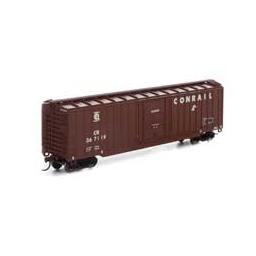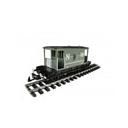MODEL FEATURES:
- Brand new paint schemes
- Fully-assembled and ready to run
- Highly-detailed, injection-molded body
- Separate brake wheel
- Painted and printed for realistic decoration
- Machined metal wheels
- Weighted for trouble free operation
- Wheels with RP25 contours operate on all popular brands of track
- Body mounted McHenry operating scale knuckle couplers
- Window packaging for easy viewing
- Interior plastic blister carton safely holds model for convenient storage
- Minimum radius: 18”
PRIMED FOR GRIME MODELS FEATURE:
- Duplicated look and feel of “In Service” equipment; “Tattered and Torn” just like the real thing
- Faded base colors matched to the prototype
- Patches applied and shaped per road number matching each corresponding side to the prototype
- Perfect starting point for adding grime and rust
PROTOTYPE AND BACKGROUND INFO:
Railroad boxcars are perhaps not only the best-recognized pieces of equipment ever put into service but also one of the most identifiable symbols of the industry itself. During the early years of the industry, freight was hauled on simple flatcars or early gondolas. In Upstate New York was the burgeoning Mohawk & Hudson Railroad, the first chartered system in the United States which later became part of the New York Central, came up with the novel idea of covering its gondolas in 1833 since the railroad dealt with snow throughout much of the winter. The car’s development continued to improve over the years, such as switching from basic wood construction with steel outside-bracing within the same size specifications; 40 feet, a standard size employed by the American Association of Railroads (AAR). What made boxcars great, at least in the eyes of the railroads, was their ability to haul about anything! Railroads thrive on redundancy to maximize efficiency.
Specs
| COUPLER STYLE: | McHenry Scale Knuckle |
| ERA: | 1960s+ |
| Minimum Age Recommendation: | 14 years |
| Is Assembly Required: | No |
Search Terms: boxcar, ready to roll, plug door, outside braced, 50obpdbox, ath_0418



